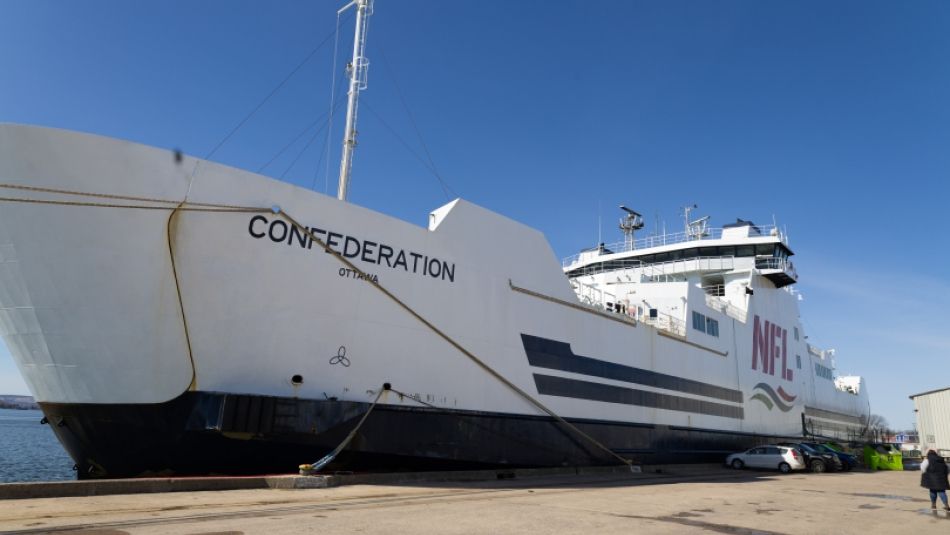
Share
Unifor’s Marine Sector, representing 3650 members who support the main trade routes for Canada, build ships, and are involved in protecting Canada’s coasts, is calling on all levels of government and industry to fight back against U.S. tariffs on Canadian good and services
This aggressive tariff regime, as well as American attacks on Canadian sovereignty, the resulting instability in trade and investment programs, and the opening of northern trade routes, necessitate the focus on and prioritization of Canada’s marine infrastructure and coastal borders.
Diversification of export markets
Achieving the policy goal of diversified export markets will require support from government to build new export capacity across the marine sector, including connections to intermodal transport hubs.
Raw materials movement requires increased investment in bulk transport capacity. Investment in expanded regulation and oversight of the sector through research specific to the Canadian experience ensuring quality control, emissions standards, and safety, must be prioritized to match growth in the sector. Public investment is integral to replacing the loss of industrial research capacity in the USA in transportation.
A Made-in-Canada procurement program should be developed to support transport of value-added production across Canada’s long distance supply chains. A procurement program should be supported with a marine sector industrial strategy expanding production of supply chain infrastructure and manufacturing capacity, including shipbuilding.
The role of public ownership and investment
There is a significant role for public ownership in the marine sectors–which support industries hit by tariffs–to access alternative markets. Public infrastructure, including marine ports and the St. Lawrence Seaway, must be supported to deal with changing requirements for the East-West and Northern transport of energy, bulk, and freight transport to and from our coasts. The continued erosion of public ownership and control over these assets interferes with the provision of effective and affordable internal shipping routes and coastal services to Canadians.
To diversify trade both internally and externally, Canada must look to public transport infrastructure as part of the production system of our economy, connecting industries and communities. The movement of people and goods with ferries between maritime provinces and coastal communities is an important part of any internal trade program.
Investments in large infrastructure programs to facilitate efficient public transportation will support jobs and economic growth in these regions. The Seaway and internal waterways infrastructure are vital parts of the supply chains that connect provinces and allow goods to reach export markets more easily. Upgrading and sustaining maintenance should be a priority for the government.
Importance of infrastructure development and East, West, and North trade
The main obstacle to moving goods East-West-North according to Statistics Canada’s recent study on inter-provincial trade, is distance. Planned deregulating of inter-provincial trade rules will not solve these problems of distance and cost of transport.
Shipping goods across different modes of transportation in Canada should be made easier through government investment in infrastructure and standardized data platforms, reducing costs for industry to connect in different parts of the country.
Supply chain resilience
Supply chain resilience will require public data collection and centralization on capacity availability and utilization for firms to plan investment. Logistical options for different types of products and where they can be moved would support our domestic supply chains.
Canadian commercial activity would benefit from increased industrial research focused on the marine sector. Increasing speed, diversity of fuel options, safety, and low-cost transportation options will only be made possible from the prioritization of larger research and data sharing programs that will support supply chain resiliency in the face of Canadian weather events and climate change.
Support for testing, approving, and regulating new transport technology will be necessary in the face of federal research cuts in the U.S. Canada can no longer rely on access to other country regulatory research. Industrial research programs under ministries overseeing marine and transport sectors along with national research councils should be funded to support the unique Canadian environment and experience.
Labour protections and training
Labour protections and unions are crucial for supply chain security and resiliency. Free and fair collective bargaining help ensure high quality working conditions and the wages necessary to attract highly skilled labour to these sectors.
Specifically, coastguard training and recruitment should be a priority for the government in order to expand the scope of coastal protection.
Protecting our coasts
Marine communication support through a Made-in-Canada technology, such as through companies like Telesat, should be supported. Procurement of modern coastal marine communication infrastructure and research networks should be leveraged to establish northern and remote community access through Canada-controlled and regulated telecommunications infrastructure.
Canada should re-establish a federal and provincial supported ferry procurement program. This could include a plan for investment in Made-in-Canada ferry maintenance and building to ensure a ready supply and continued operations of ferry services to coastal communities.
To meet new needs of northern sovereignty and security, expanded shipbuilding capacity for Coast Guard and northern patrol ships will likely be necessary.


